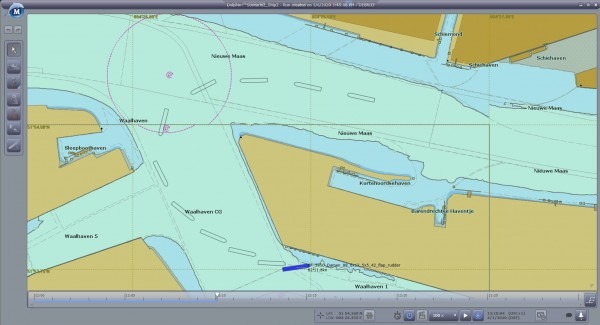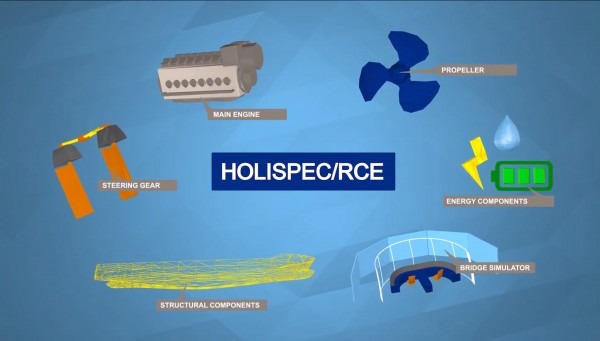Can bridge simulations support conceptual design?
Within the EU Horizon project Holiship, MARIN has developed, together with partners, a Virtual Vessel Framework (VVF) in which real-time bridge simulations can be used to make key decisions in the concept design stage. This VVF can lead to a better performing ship or cost reductions.

Figure 3: Bird-eye view of sailed track into a basin in the Port of Rotterdam
Virtual sea trials improve ship design
Virtual sea trials are one of many possible applications for a VVF. One example is testing new manoeuvring configurations early on in the design of the vessel. By coupling hydrodynamic models and machinery models with a bridge simulator, the feel of the manoeuvring configuration can be tested in addition to the numerical evaluations. The various hydrodynamic and machinery models are coupled through the Remote Components Environment (RCE) developed by DLR, Germany and is illustrated in Figure 1.

Figure 1: Coupling of tools to the RCE

Figure 2: Schematic overview of coupled tools to MARIN’s bridge simulator
Bridge simulations were set up for eight typical harbour manoeuvring scenarios and carried out and assessed by an experienced captain. The simulations were performed for two rudder configurations: a full spade rudder and a flap rudder.
Bridge simulations were successfully carried out. The captain could clearly experience the difference in sailing for both rudders. Based on the assessment of the simulations the captain preferred the flap rudder over the spade rudder for this vessel. The advantages of the real-time bridge simulations are clear. The application of the VVF adds a lot of value to the concept design or retrofit of ships because the various manoeuvring scenarios cover the daily use of the vessel much better, and can be combined with the IMO’s prescribed manoeuvres.
This demonstration project showed the benefit of using the bridge simulator for manoeuvring solutions. However, the VVF platform can facilitate the connection of all sorts of machinery tools to the bridge simulator. Using this kind of simulation in an early stage contributes to key decisions and supports the concept stage for a large number of applications. In addition there is the added benefit that the concept stage is no longer limited to only a numerical assessment.

